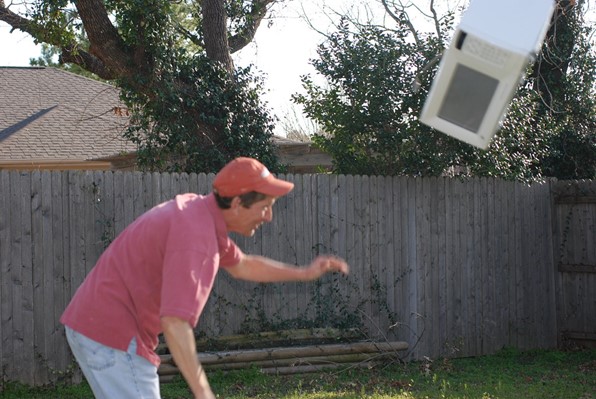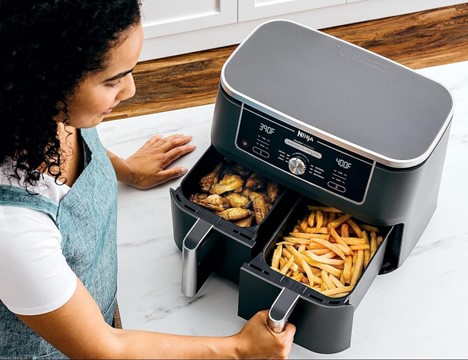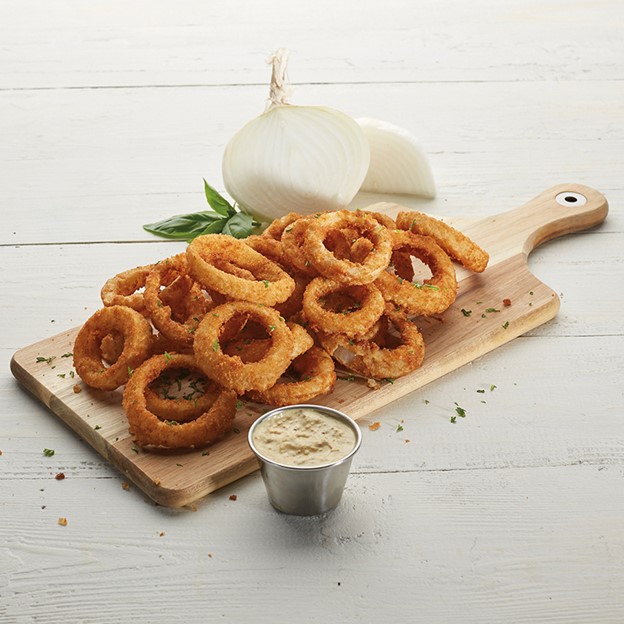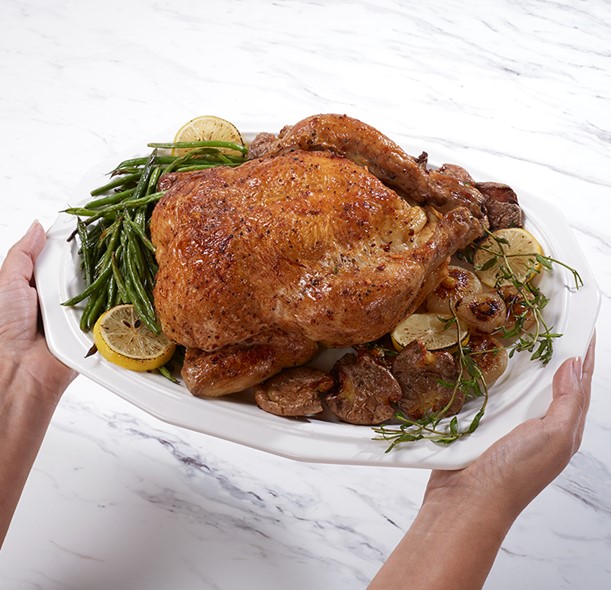HOLY COW! Do You LOVE Your Air Fryer, or WHAT!?
Well, did I open a flood-gate with my recent Air Fryer article…the responses are still coming in. You people don’t just like your air fryer, you LOVE your air fryer. And you were stellar in explaining why!

So, with your enthusiastic comments in mind, I thought we’d continue the conversation by looking at the “DOs and DON’Ts” of using this remarkable appliance. This is for all those out there that are considering it or are new to its ownership. According to the experts at Hamilton Beach (a popular brand of air fryer), here’s what they say are make-or-break techniques when air frying:
DO LET GO OF THE MICROWAVE HABIT. Microwaves are probably your go-to for reheating foods, but hear us out: the air fryer is going to do a way better job of reviving last night’s pizza or your extra fries from lunch than a microwave could ever do. It gives food that bit of crunch, meltiness and texture back that you just won’t be able to achieve in the microwave.

DO DITCH THE PRE-HEATING PRACTICE. Because of their compact size and powerful heat circulation, air fryers are quick to get to temperature—by around a minute or less. That means unless specifically instructed, there’s no need to bring the air fryer up to temperature before adding your food, cutting down on overall cook time. Not having to wait ten to fifteen minutes for your oven to preheat is a huge advantage of air frying over cooking in your oven. [Alice: This is one of the features you mentioned over and over!]
DO SHAKE THE BASKET. Once you start cooking, you might feel the urge to remove the basket, give it a shake, and return it to the base. Go ahead! In fact, we recommend a few good jostles to ensure the heat is reaching all sides of the food evenly.
When cooking foods that are stacked on top of each other in the basket (such as French fries), shaking the contents of the basket is necessary to ensure even cooking and to prevent the pieces from sticking together. It's a good idea to shake the basket periodically when cooking most foods to prevent it from sticking to the basket.

DON’T BLOCK AIR FLOW. Lining the bottom of the cooking basket with foil or parchment paper will block the airflow necessary for air frying and result in undercooked or unevenly cooked food. It’s best to cook directly on the bottom of the nonstick basket whenever possible. You’ll have no problems cleaning up with a little soap and water afterwards.
One exception: sometimes putting parchment paper under certain foods can make them easier to remove, like a flaky fish or delicate cookie. If that’s the goal, cut the paper to the size of your food to allow as much air to circulate around it as possible.
DO WATCH FOOD WHILE IT COOKS. The air fryer is a great replacement for conventional ovens, toaster ovens and microwaves. But not many food companies are labeling their packages with an air fryer cook time, which means sometimes cooking new foods is a guessing game.

That said, DON’T ASSUME CONVENTIONAL OVEN COOK TIME AND TEMPERATURE IS THE SAME FOR THE AIR FRYER. Cooking time in an air fryer depends on the amount of food in the basket and the size of the air fryer. To ensure you don’t burn anything, make sure to keep an eye on food as it cooks and adjust your recipe accordingly. As noted earlier, air fryers will cook most foods faster than a traditional oven.
DON’T USE LIQUID BATTER. If you want to make foods with a crunchy coating, like turkey tenders, it’s best to dredge them in a breading of flour, egg and breadcrumbs (or panko). Liquid batter will drip off the food before it has a chance to firm up. Refrigerating foods after you bread them for several minutes will help the breading to stick better, once they’re placed in the air fryer.

DON’T DOUSE FOOD IN OIL. The air fryer’s beauty is that it only needs a little bit of cooking oil, if any, to get foods perfectly crispy. [Alice: another popular reason for loving this appliance!] Notice the food’s fat content. Fattier foods, like steak, require less oil than something like an ear of corn. Battered or breaded frozen foods (onion rings, chicken nuggets, etc.) also typically don’t need any oil, since oil products are in the coating already.
Use a cooking oil spritzer (when oil is wanted) for the most control. (Aerosol oil products have unappealing added ingredients you may want to avoid.)
DO USE IT TO ROAST AND BAKE. It’s not just about foods that you would traditionally throw in the deep fryer. Make veggies in the air fryer when you want a roasted texture without using much or any oil. Make cinnamon rolls when you don’t feel like waiting for the oven to preheat for 10 or more minutes. Or, roast chicken when you want a crispy, golden skin and moist, tender interior. The options are limitless.

DON’T OVER-FILL IT. Tempting as it may be to fill the basket with an economy-size bag of sweet potato fries, don’t fill it more than halfway full. This, plus periodically shaking the basket, will help air circulate around the food and reach every piece, giving you the absolute best results.

So, with your enthusiastic comments in mind, I thought we’d continue the conversation by looking at the “DOs and DON’Ts” of using this remarkable appliance. This is for all those out there that are considering it or are new to its ownership. According to the experts at Hamilton Beach (a popular brand of air fryer), here’s what they say are make-or-break techniques when air frying:
DO LET GO OF THE MICROWAVE HABIT. Microwaves are probably your go-to for reheating foods, but hear us out: the air fryer is going to do a way better job of reviving last night’s pizza or your extra fries from lunch than a microwave could ever do. It gives food that bit of crunch, meltiness and texture back that you just won’t be able to achieve in the microwave.

DO DITCH THE PRE-HEATING PRACTICE. Because of their compact size and powerful heat circulation, air fryers are quick to get to temperature—by around a minute or less. That means unless specifically instructed, there’s no need to bring the air fryer up to temperature before adding your food, cutting down on overall cook time. Not having to wait ten to fifteen minutes for your oven to preheat is a huge advantage of air frying over cooking in your oven. [Alice: This is one of the features you mentioned over and over!]
DO SHAKE THE BASKET. Once you start cooking, you might feel the urge to remove the basket, give it a shake, and return it to the base. Go ahead! In fact, we recommend a few good jostles to ensure the heat is reaching all sides of the food evenly.
When cooking foods that are stacked on top of each other in the basket (such as French fries), shaking the contents of the basket is necessary to ensure even cooking and to prevent the pieces from sticking together. It's a good idea to shake the basket periodically when cooking most foods to prevent it from sticking to the basket.

DON’T BLOCK AIR FLOW. Lining the bottom of the cooking basket with foil or parchment paper will block the airflow necessary for air frying and result in undercooked or unevenly cooked food. It’s best to cook directly on the bottom of the nonstick basket whenever possible. You’ll have no problems cleaning up with a little soap and water afterwards.
One exception: sometimes putting parchment paper under certain foods can make them easier to remove, like a flaky fish or delicate cookie. If that’s the goal, cut the paper to the size of your food to allow as much air to circulate around it as possible.
DO WATCH FOOD WHILE IT COOKS. The air fryer is a great replacement for conventional ovens, toaster ovens and microwaves. But not many food companies are labeling their packages with an air fryer cook time, which means sometimes cooking new foods is a guessing game.

That said, DON’T ASSUME CONVENTIONAL OVEN COOK TIME AND TEMPERATURE IS THE SAME FOR THE AIR FRYER. Cooking time in an air fryer depends on the amount of food in the basket and the size of the air fryer. To ensure you don’t burn anything, make sure to keep an eye on food as it cooks and adjust your recipe accordingly. As noted earlier, air fryers will cook most foods faster than a traditional oven.
DON’T USE LIQUID BATTER. If you want to make foods with a crunchy coating, like turkey tenders, it’s best to dredge them in a breading of flour, egg and breadcrumbs (or panko). Liquid batter will drip off the food before it has a chance to firm up. Refrigerating foods after you bread them for several minutes will help the breading to stick better, once they’re placed in the air fryer.

DON’T DOUSE FOOD IN OIL. The air fryer’s beauty is that it only needs a little bit of cooking oil, if any, to get foods perfectly crispy. [Alice: another popular reason for loving this appliance!] Notice the food’s fat content. Fattier foods, like steak, require less oil than something like an ear of corn. Battered or breaded frozen foods (onion rings, chicken nuggets, etc.) also typically don’t need any oil, since oil products are in the coating already.
Use a cooking oil spritzer (when oil is wanted) for the most control. (Aerosol oil products have unappealing added ingredients you may want to avoid.)
DO USE IT TO ROAST AND BAKE. It’s not just about foods that you would traditionally throw in the deep fryer. Make veggies in the air fryer when you want a roasted texture without using much or any oil. Make cinnamon rolls when you don’t feel like waiting for the oven to preheat for 10 or more minutes. Or, roast chicken when you want a crispy, golden skin and moist, tender interior. The options are limitless.

DON’T OVER-FILL IT. Tempting as it may be to fill the basket with an economy-size bag of sweet potato fries, don’t fill it more than halfway full. This, plus periodically shaking the basket, will help air circulate around the food and reach every piece, giving you the absolute best results.
 Alice Osborne
Alice Osborne
Weekly Newsletter Contributor since 2006
Email the author! alice@dvo.com
